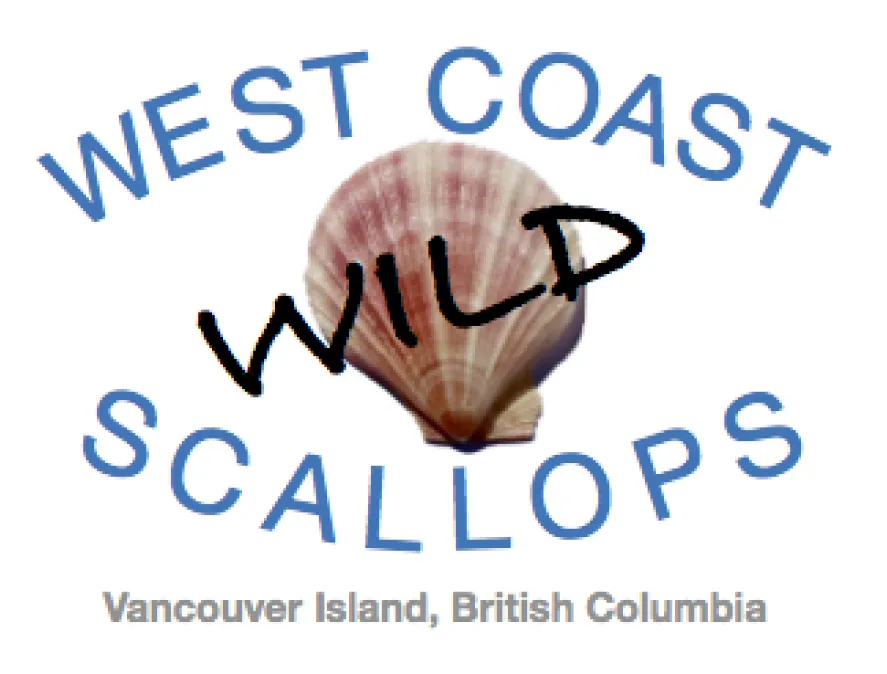
How We Fish
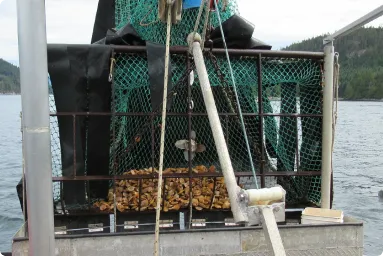
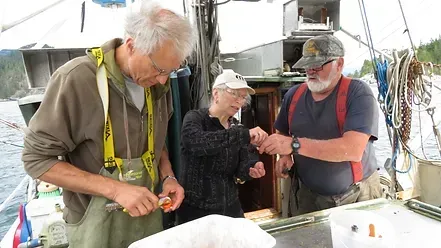
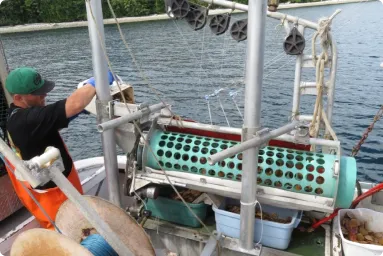

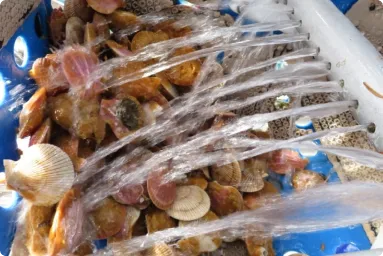
At West Coast Wild Scallops, we are dedicated to ensuring our fishing practices contribute positively to marine conservation. Our commitment is reflected in every aspect of our operations, from the equipment we use to our contribution to the science, monitoring and management of our fishery. We understand the importance of maintaining the delicate balance of ocean ecosystems and strive to protect both the scallops we harvest and their natural habitats.
A cornerstone of our fishing practices is our innovative trawl design, which significantly reduces impact on the ocean floor. Some traditional trawling methods can disrupt marine habitats and result in high by-catch levels. Our specially designed trawl minimizes these issues by targeting only the scallops and avoiding damage to the surrounding environment. This design helps preserve the ocean floor’s integrity and protects other marine species that might otherwise be unintentionally caught.The trawl was designed by a fisherman to utilize the natural movement of the scallop. Swimming scallops naturally swim up into the water column in a way most scallop species do not. As a result, our trawl is designed to keep the net off the ocean floor and catch the scallops while they are swimming. The design has been so successful that it won a Romeo LaBlanc award in 2003 for responsible fishing. According to Lauzier et al. (2005), “an examination of the trawl impacts and fishing characteristics show that if the butterfly scallop trawl is used following a developed code of best practices, the habitat impacts and bycatch is negligible.” (Lauzier et al. 2005).
Quotas for our scallop fishery are determined through rigorous, scientifically based assessments conducted every two years. These assessments, derived from comprehensive biomass surveys, evaluate the scallop population in the fishing area. By relying on accurate, data-driven information,quotas are set at levels reflecting the health and abundance of the scallop population and supporting the long-term health of the fishery.
We adhere to a conservative quota system that permits the harvest of only 4% of the available scallop biomass each year. This careful allocation of resources allows the scallop population to maintain its health and resilience. By limiting our harvest, we provide ample opportunity for the population to regenerate and continue thriving, thus supporting the overall stability of the fishery.

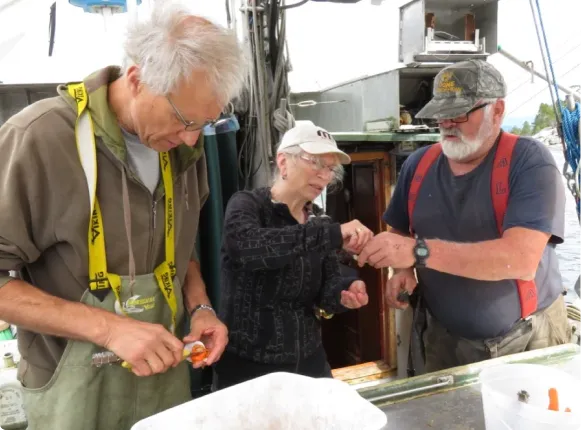
Another critical aspect of our efforts is 100% traceability. Every box of scallops is labeled so you know who, when and where your scallops were caught by either looking at the outside of the box or at the detailed harvest tag inside the box. Each harvest tag also has a QR code that you can scan to view the harvest information.
Fishing scallops is a labour intensive process. Once scallops are caught by the trawl, they are brought on board and immediately sorted. As the scallops travel through the slotted sorting device, undersized scallops are returned to the ocean with 97-98% rate of survival.Ensuring high survival rates for juvenile scallops helps maintain a robust population and supports the future health of the fishery.Scallops are then placed in a tumbler to remove the naturally occurring sea sponge and other organisms from the shell. Additionally, we hand sort, and hand scrape as needed, all the scallops as we place them in bags. Lastly the bags are weighed, flushed with sea water (which removes sand from inside the shell), and frozen.
We take pride in our commitment to responsible fishing and environmental stewardship. Our commitment has been reflected in the endorsement by Ocean Wise as a seafood that is recommended under their sustainable seafood program.
For those interested in a deeper understanding of our practices, we recommend reviewing the Integrated Fisheries Management Plan for the scallop fishery (https://www.pac.dfo-mpo.gc.ca/fm-gp/mplans/scallop-trawl-petoncle-chalut-ifmp-pgip-sm-eng.html).This report offer an in-depth analysis of our practices and their impact on marine ecosystems, highlighting our ongoing commitment to maintaining the health and sustainability of the scallop population
Get In Touch


